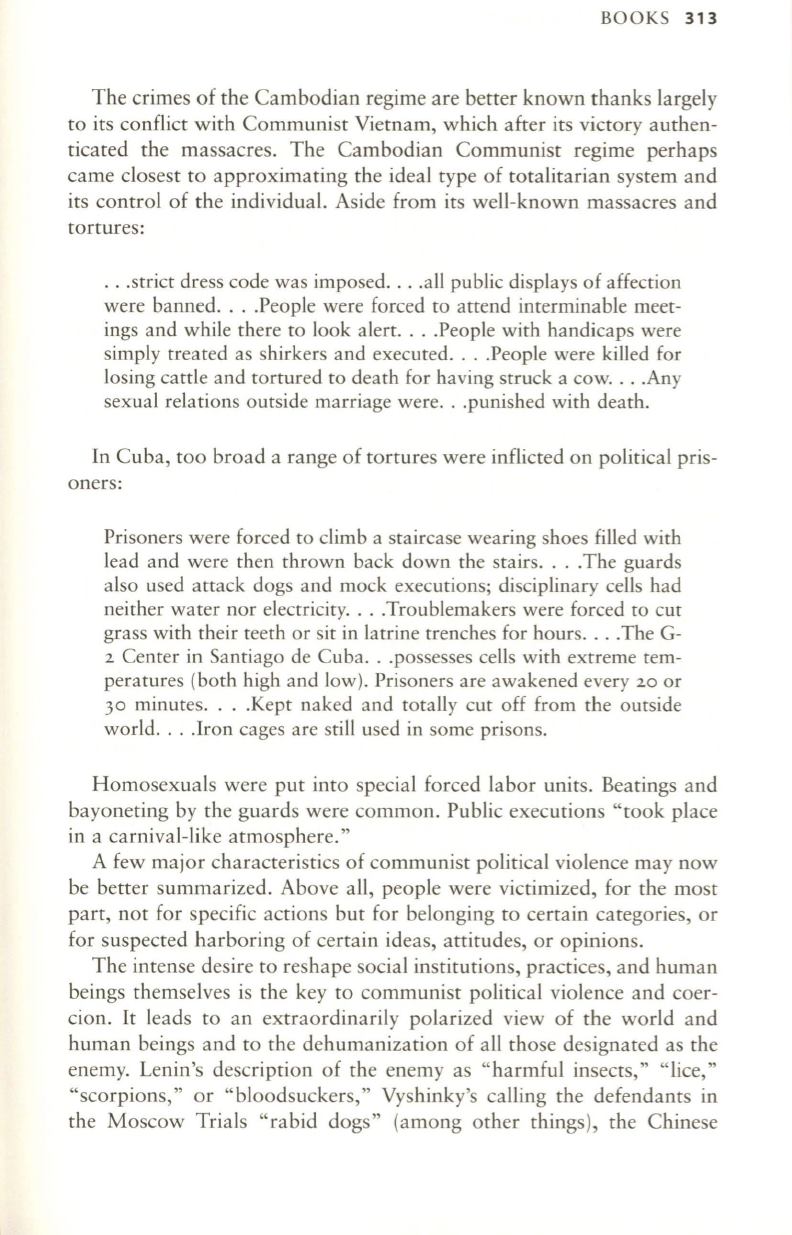
BOOKS
313
The crimes of the Cambodian regime are better known thanks largely
to its conflict with Communist Vietnam, which after its victory authen–
ticated the massacres . The Cambodian Communist regime perhaps
came closest
to
approximating the ideal type of totalitarian system and
its control of the individual. Aside from its well-known massacres and
tortures :
.. .strict dress code was imposed. . ..all public displays of affection
were banned . .. .People were forced to attend interminable meet–
ings and while there to look alert. .. .People with handicaps were
simply treated as shirkers and executed. . . .People were killed for
losing cattle and tortured to death for having struck a cow....Any
sexual relations outside marriage were.. .punished with death.
In
Cu ba, too broad a range of tortures were inflicted on political pris–
oners:
Prisoners were forced to climb a staircase wearing shoes filled with
lead and were then thrown back down the stairs.. . .The guards
also used attack dogs and mock executions; disciplinary cells had
neither water nor electricity....Troublemakers were forced
to
cut
grass with their teeth or sit in latrine trenches for hours... .The G-
2
Center in Santiago de Cuba.. .possesses cells with extreme tem–
peratures (both high and low). Prisoners are awakened every
20
or
30
minutes... .Kept naked and totally cut off from the outside
world... .Iron cages are still used in some prisons.
Homosexuals were put into special forced labor units . Beatings and
bayoneting by the guards were common. Public executions "took place
in a carnival-like atmosphere."
A few major characteristics of communist political violence may now
be better summarized . Above all, people were victimized, for the most
part, not for specific actions but for belonging to certain categories, or
for suspected harboring of certain ideas, attitudes, or opinions.
The intense desire to reshape social institutions, practices, and human
beings themselves is the key to communist political vio lence and coer–
cion.
It
leads to an extraordinarily polarized view of the world and
human beings and to the dehumanization of all those designated as the
enemy. Lenin's description of the enemy as "harmful insects," "lice,"
"scorpions," or "bloodsuckers," Vyshinky's calling the defendants in
the Moscow Trials "rabid dogs" (among other things), the Chinese


